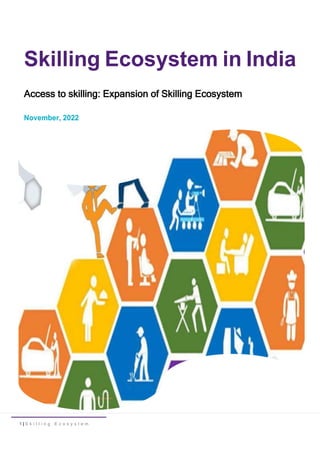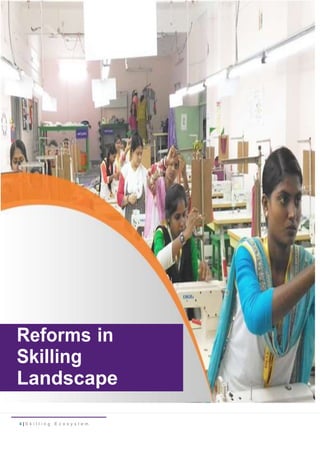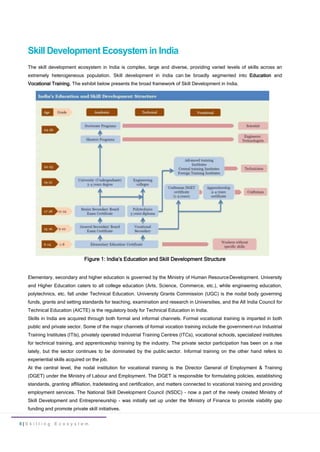The document outlines India's skilling ecosystem, emphasizing the need for a skilled workforce to enhance employability and economic growth, especially given its large youth population. It details the transformation of skilling initiatives under the Ministry of Skill Development and Entrepreneurship (MSDE), which has focused on standardization, integrating private sector participation, and aligning training with industry demands. Various programs and frameworks, including the National Skill Qualification Framework (NSQF) and Pradhan Mantri Kaushal Vikas Yojana (PMKVY), aim to improve skill development and vocational training across the country.






























